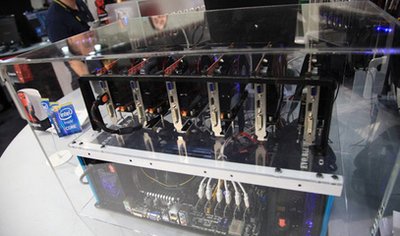In the dynamic world of cryptocurrencies, where Bitcoin, Ethereum, and Dogecoin constantly capture headlines, the environmental footprint of crypto mining operations has become an urgent conversation. As global awareness heightens regarding the energy consumption and carbon emissions associated with mining rigs and mining farms, companies specializing in selling and hosting mining machines are pioneering green innovations. These advancements not only reduce environmental impact but also optimize the efficiency and profitability of miners worldwide.
At the heart of crypto mining lies the relentless work of miners—both individuals and large-scale operations—solving complex algorithms to validate transactions and secure blockchain networks. The computing horsepower required is immense, especially for Bitcoin (BTC) miners operating high-performance ASIC rigs. However, this computational demand translates to significant electrical consumption, often sourced from carbon-heavy grids. To counter this, eco-friendly technologies such as renewable energy integration, waste heat recycling, and advanced cooling systems have surged to the forefront, transforming mining farms into more sustainable hubs of digital asset production.
One particularly promising development is the deployment of solar-powered mining rigs, which harness solar panels to fuel the computational process. This innovation is especially impactful for mining farms in sunny regions, where access to cheap and clean solar energy drastically cuts costs and carbon emissions. Moreover, companies hosting mining machines are increasingly offering “green hosting” services—facilities powered primarily by eco-friendly energy sources and equipped with smart energy management systems. Such hosting solutions appeal to environmentally conscious crypto enthusiasts eager to support sustainable blockchain infrastructure.

Beyond renewable energy, advances in cooling technology significantly enhance the ecological profile of mining rigs. Traditional air cooling, once the standard, is gradually giving way to liquid cooling and immersion cooling methods. These cutting-edge approaches allow miners to maintain optimal rig temperatures more efficiently while drastically reducing power spent on air conditioning. Immersion cooling, in particular, submerges mining hardware in a non-conductive thermal solution, removing heat swiftly and minimizing noise pollution—an essential consideration for urban or densely populated mining hosting centers.
Ethereum (ETH) miners have also benefited from such technologies, especially given Ethereum’s transition towards proof-of-stake that will fundamentally alter the miner landscape. Still, with the vast number of Ethereum miners in operation, eco-conscious upgrades remain relevant. For many Dogecoin (DOG) miners, whose operations often piggyback on Litecoin’s Scrypt algorithm, energy efficiency enhancements mean the difference between marginal profits and losses, especially in an unpredictable market. Hosting providers, therefore, stay ahead of the curve by integrating state-of-the-art hardware that balances hash rate performance with energy consumption.

Another layer of innovation is the use of artificial intelligence and machine learning algorithms to optimize mining operations. These technologies analyze real-time data from mining machines to adjust power usage, forecast performance, and schedule maintenance before critical breakdowns occur. In doing so, mining farms can avoid unnecessary downtime and reduce wasted electricity. Such smart mining solutions perfectly complement the company’s core expertise in selling and hosting mining equipment by adding a dimension of operational intelligence—making each miner more adaptive, greener, and cost-effective.
Furthermore, cryptocurrency exchanges have begun rewarding miners who demonstrate sustainable practices through incentives and fee reductions. This trend encourages a symbiotic relationship between mining operations and markets, driving broader adoption of eco-friendly technologies across the blockchain ecosystem. As exchanges prioritize listing coins mined under green protocols, the ripple effects reach miners, hosting providers, and even end consumers, promoting a cycle of environmental responsibility.
In summary, green innovations in crypto mining are no longer just buzzwords but essential components of a sustainable digital future. From solar-powered mining farms and immersive cooling techniques to AI-driven management systems and green hosting services, these technologies reshape how Bitcoin, Ethereum, Dogecoin, and other cryptocurrencies come into existence. By embracing eco-conscious solutions, mining machine sellers and hosting service providers help forge an industry where profitability meets planetary stewardship—proof that crypto innovation and environmental responsibility can coexist harmoniously.
This article explores groundbreaking eco-friendly technologies revolutionizing crypto mining, from solar-powered rigs to advanced cooling systems and blockchain-based energy trading, highlighting their potential to drastically reduce environmental impact while sustaining industry growth.